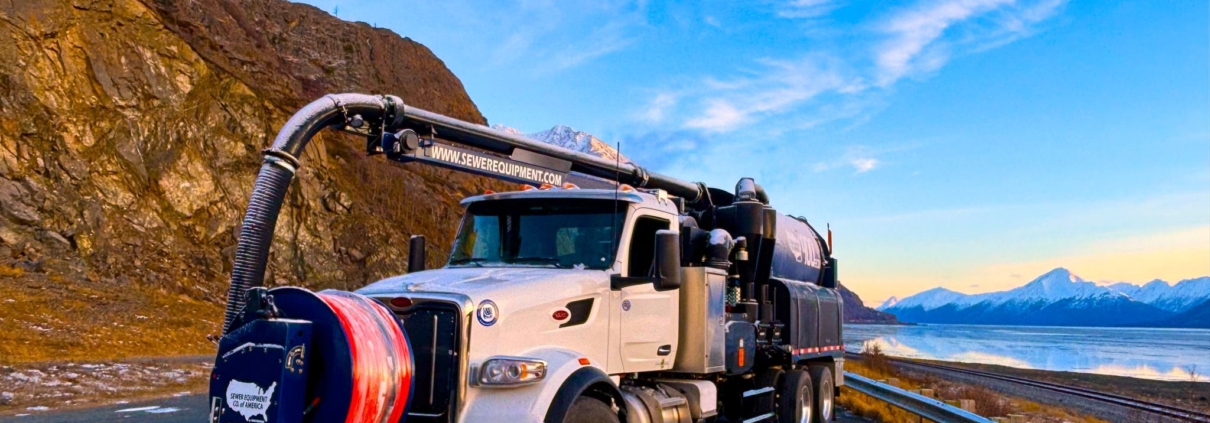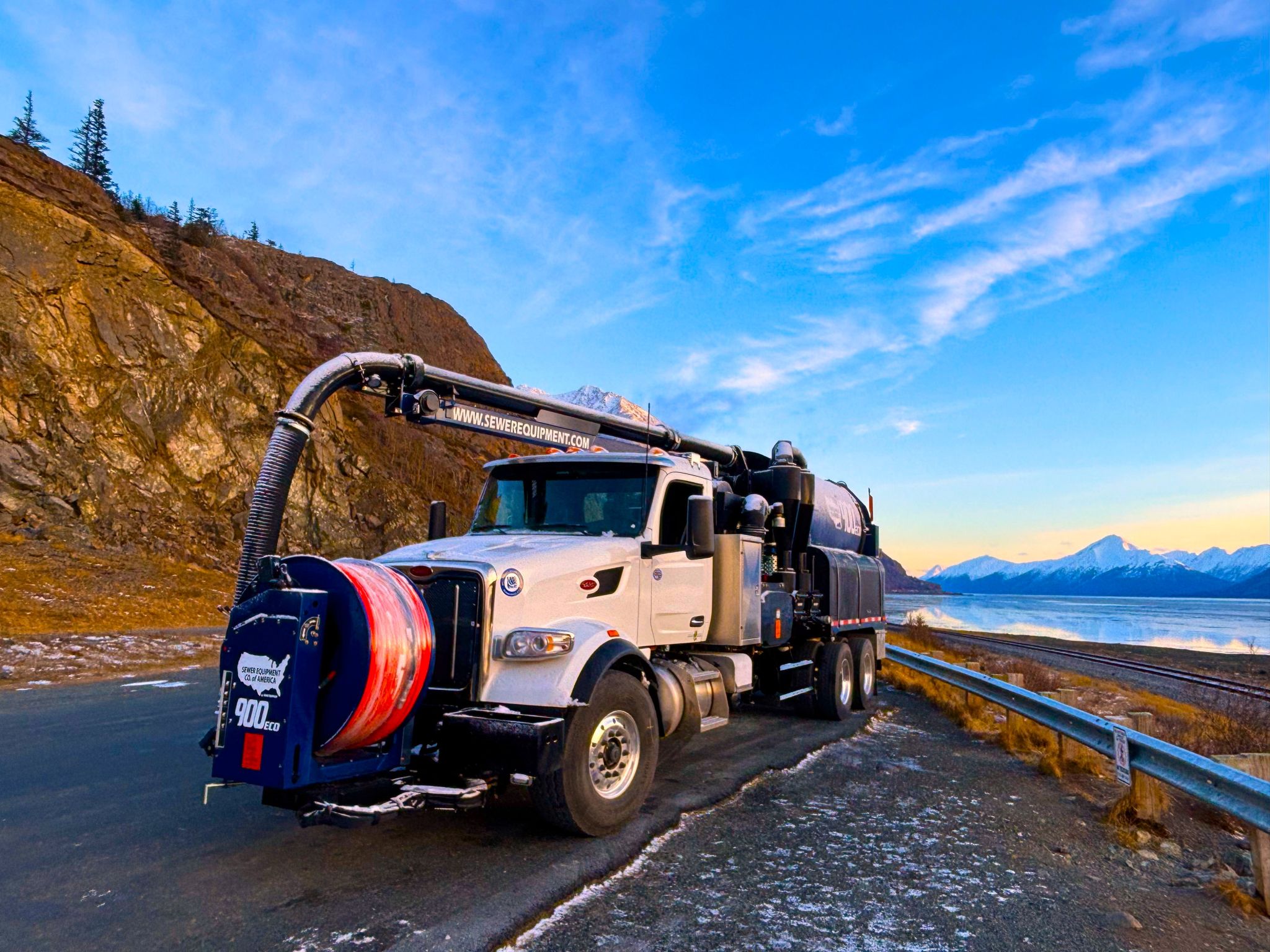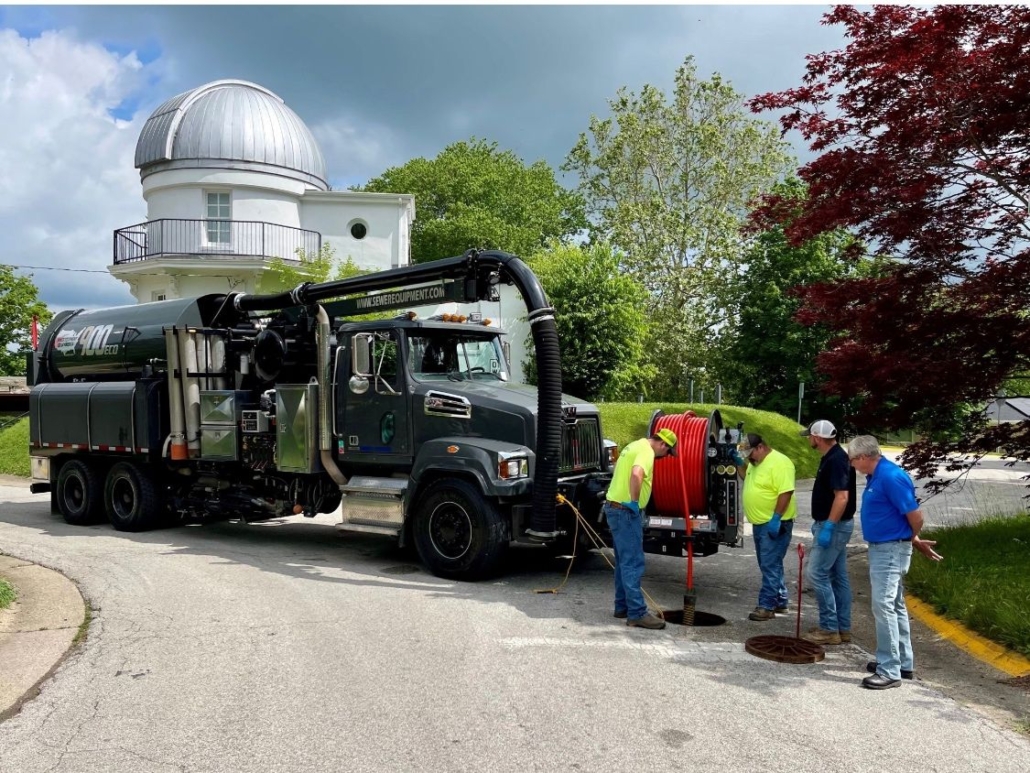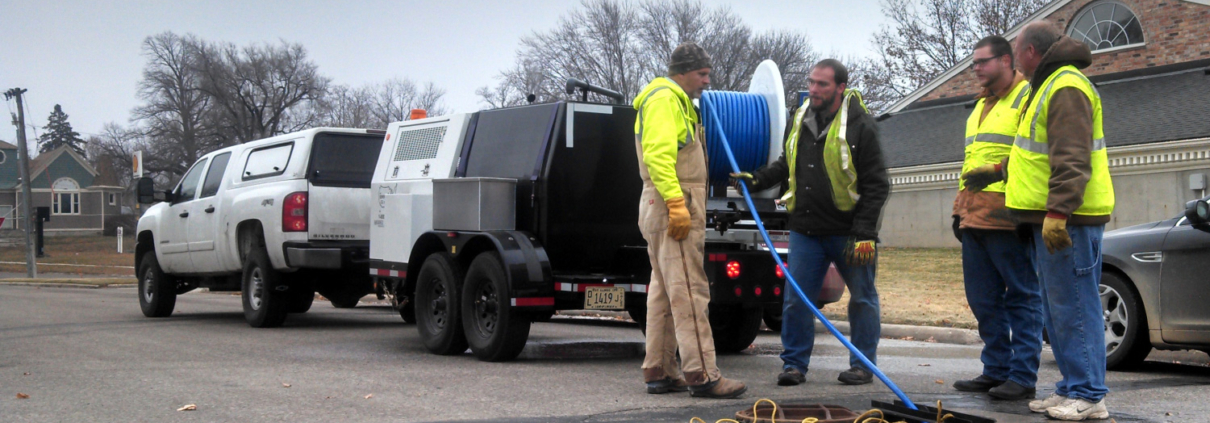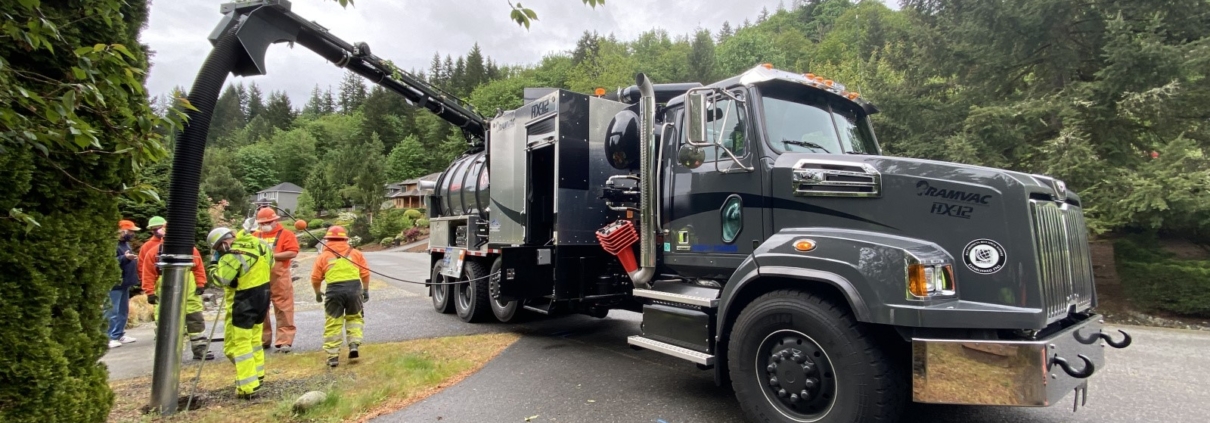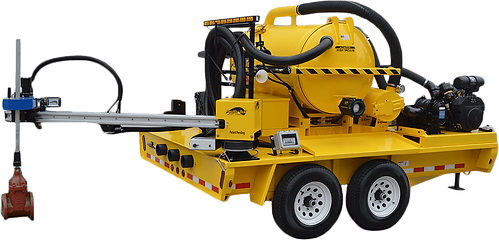If you’re familiar with motorsports, you know that a car with good tires and less horsepower will often outperform one with all the power in the world but terrible tires. The same principle applies to sewer jetting equipment. Let me explain.
I’ve lost count of how many times I’ve visited municipalities and heard operators say their jet trailer or truck just can’t get through ice or clean roots out of problem areas. Often, they feel like their old equipment simply isn’t up to the task, leading to frustration and costly calls to contractors with brand-new trucks. While it’s true that some older, smaller jetting units may lack the water capacity, pressure, or flow for certain projects, that’s not always the case.
Most of the time, older equipment can still get the job done—often better than many realize. Think of it like putting new tires on your old racecar: upgrading a key component can transform performance. For jetting equipment, the right nozzle can make your older unit perform as well as (or better than) much newer gear. Yet, when I ask operators, “What nozzle are you running?” the most common answer I hear is, “I’m not sure—it’s just the one we’ve always used.” Often, that means a basic drilled nozzle that’s been around for years, or a throw-away replacement ordered every few years since the 1990s.
While these nozzles are economical and might “do the job,” their design hasn’t kept up with modern advancements. Over the past decade, nozzle technology has improved dramatically, but many operators stick with outdated options. Drilled nozzles, usually priced between $75 and $150, use simple steel holes that lack rotation and flow control. They’re highly susceptible to wear: high-pressure water and poor water quality slowly erode the holes, causing them to widen over time. This leads to reduced cleaning power, wasted water, and increased refilling—issues that often go unnoticed since pressure gauges are at the hose reel, not at the nozzle itself.
Advanced nozzles address these problems through more intelligent engineering and better materials. Many now feature stainless steel or even ceramic inserts—like those used by ENZ, a global leader in nozzle technology. Ceramics are incredibly resistant to high-pressure water wear (just ask anyone who’s taken apart a high-pressure water pump). Even better, these inserts are replaceable, cost less than a new drilled nozzle, and last much longer.
These modern nozzles also give you greater control. Whether it’s directing water more efficiently or spinning jets to peel away grease, roots, or ice, the right nozzle dramatically improves cleaning results. There’s a solution for every challenge: sand and grit? Use a high-flow nozzle with fan jets focused on the pipe bottom. Grease in business districts? A rotating nozzle with 90° and 45° jets will chop and peel residue from the walls. Calcium buildup by the treatment plant? A high-speed chain scraper can grind mineral deposits without damaging pipes. Roots in older neighborhoods? A high-pressure rotating nozzle will slice through thin, hanging roots. Stubborn ice? A penetrator nozzle with a 10° rotating tip can slice around the pipe, not just punch a hole through the middle.
Of course, you don’t need every specialty nozzle on the market. Some, like the ENZ Bulldog, are incredibly versatile—featuring rear-facing jets to flush debris, a rotating head to peel grease and cut roots, and options to help regulate pipe pressure (great for avoiding blown toilets). These nozzles are fully serviceable and, with proper care, can last for well over a decade.
If you want to expand your toolkit, consider adding a Grenade Bomb or Rotodrill nozzle from ENZ for projects that involve moving large amounts of debris or clearing tough blockages. An up-front investment in the right nozzles can make your old jetter more capable than ever—potentially saving your city $100,000 or more by delaying or avoiding the need for new equipment.
At Flexible Pipe Tools & Equipment, we’re passionate about finding tailored solutions for anyone in the sewer industry. If you have questions or want to learn more, reach out—we’re always happy to offer advice and practical help.


